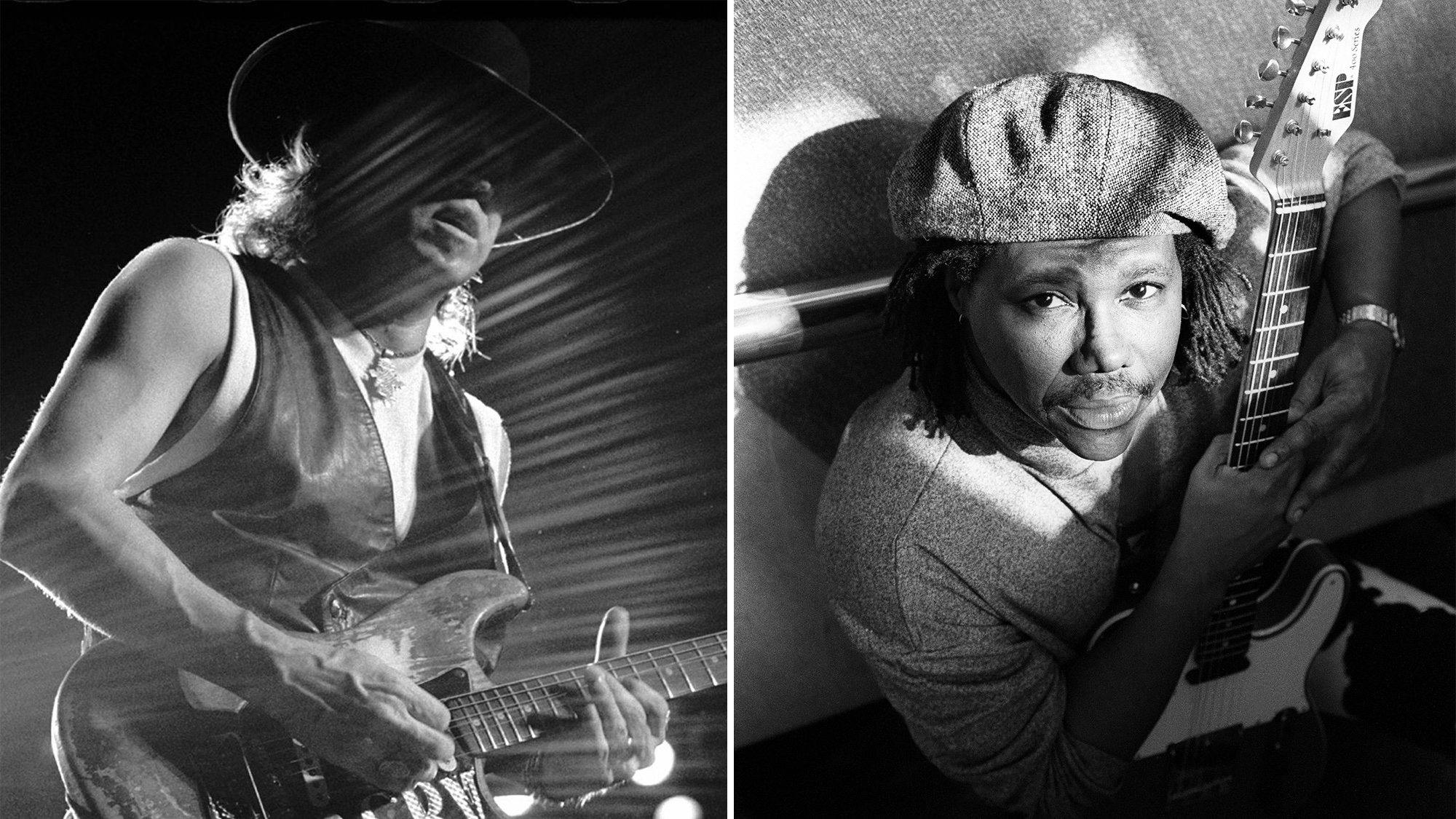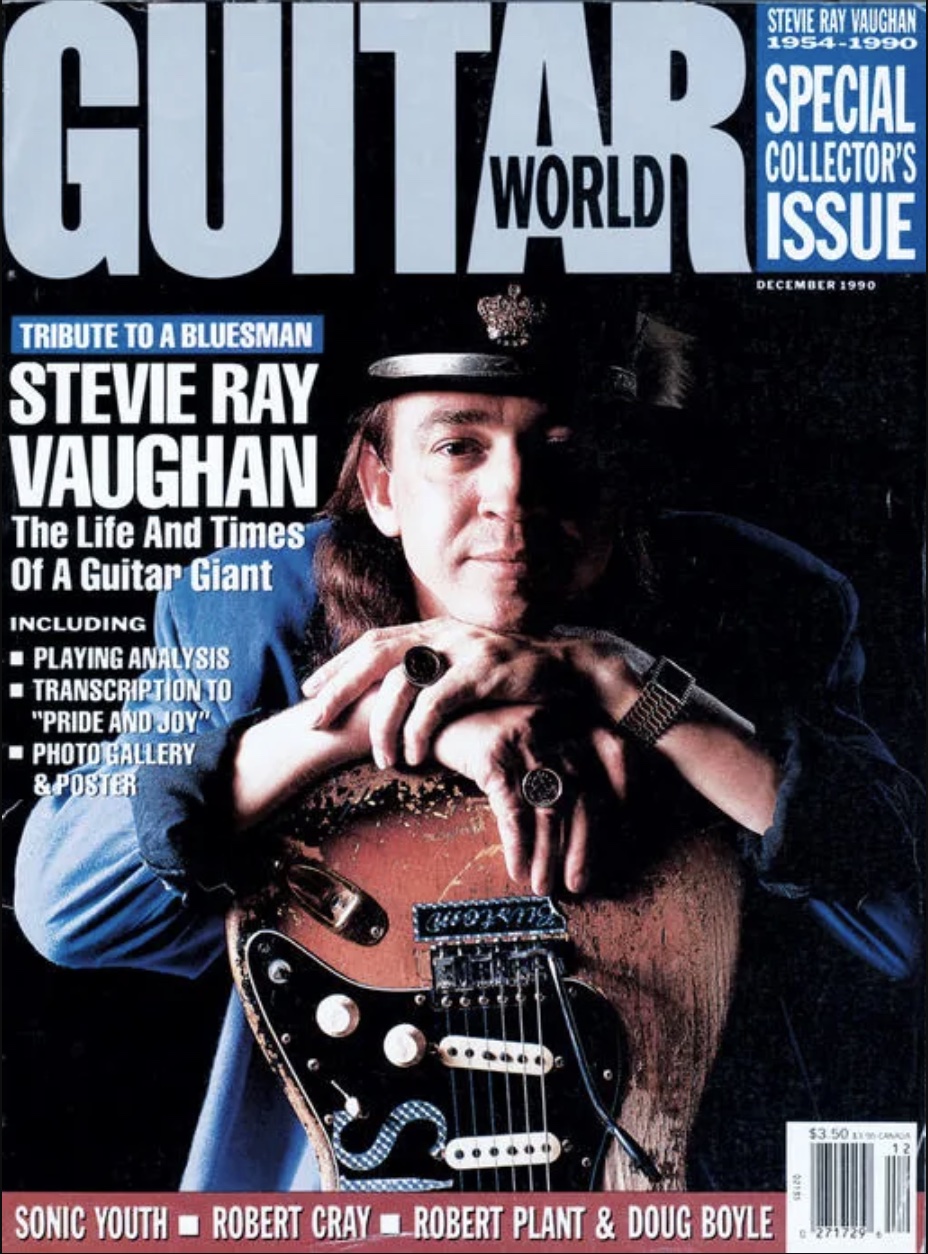“He hopped on a plane and flew in to do literally 20 seconds of notes... That was the last thing he recorded for the record”: Nile Rodgers worked with Stevie Ray Vaughan during his rapid ascent – and oversaw the guitar hero's final recording session
Having first met the Lone Star State guitar king during the sessions for David Bowie's 1983 blockbuster Let's Dance, Rodgers later produced Family Style, Stevie Ray's posthumously released collaboration with his brother, Jimmie

Guitar World's December 1990 issue was dedicated to Stevie Ray Vaughan, who was tragically killed on August 27 of that year in a helicopter crash.
The accident came just as Vaughan was in the midst of a new ascendancy. Having kicked the substance abuse problems that dogged him throughout the mid-'80s, the guitar hero had returned to the limelight in grand style in 1989 with the classic In Step album.
At the time of his death, Vaughan was preparing for the release of Family Style, a long-planned collaboration with his brother, fellow Strat-slinger Jimmie Vaughan. Manning the boards for that album was another Strat legend, Nile Rodgers.
Rodgers first encountered Vaughan in 1983, when the latter was hired to lend some Texas blues attitude to what would become David Bowie's most commercially successful album, Let's Dance.
A number of circumstances led to the eventual souring of Vaughan's relationship with Bowie, but he remained fond of the funk guitar legend, and indeed the two worked well together on Family Style.

Rodgers was one of many guitar greats who Guitar World reached out to after Vaughan's death to share their memories of the guitar hero, and the magic of his playing.
The Chic man recalled the fun times he had working with the Vaughan brothers on Family Style, and looked back with some wonder on Stevie Ray's final session.
All the latest guitar news, interviews, lessons, reviews, deals and more, direct to your inbox!
“Doing the record with Jimmie and Stevie was such a joy because the three of us felt so connected,” Rodgers told Guitar World. “I wanted the record to reflect how we were enjoying being together, so I asked them to keep the themes of the songs light and fun.
“I had to stress that to Stevie a couple of times: ‘Don't write anything too heavy, Stevie, save that for later.’ So what happens? Jimmie and I go and write Tick Tock, which is a pretty heavy song. And then on top of that we gave that to Stevie to sing! He thought that was pretty funny.
“As he was singing Tick Tock, I became so thrilled at hearing his warmth and compassion come through him as a vocalist,” Rodgers continued. “He was very shy about that, because that meant putting his guitar down and letting his voice do all the emoting.”
That said, after reviewing the tune with fresh ears as the album was just about complete, Rodgers felt that it needed more than just Stevie Ray's vocals.
“Weeks later, I listened to the song and became concerned that we didn't have his guitar on it, so I called him and said, ‘Uh, Stevie, I think we need a little guitar from you on the song. Maybe just play little spots of notes like B.B. King,’” he recounted.
“Stevie hopped on a plane and flew in to do literally 20 seconds of notes. What he played was so concise and dramatic, well, it just blew me away. That was the last thing he recorded for the record.”
Jackson is an Associate Editor at GuitarWorld.com. He’s been writing and editing stories about new gear, technique and guitar-driven music both old and new since 2014, and has also written extensively on the same topics for Guitar Player. Elsewhere, his album reviews and essays have appeared in Louder and Unrecorded. Though open to music of all kinds, his greatest love has always been indie, and everything that falls under its massive umbrella. To that end, you can find him on Twitter crowing about whatever great new guitar band you need to drop everything to hear right now.
You must confirm your public display name before commenting
Please logout and then login again, you will then be prompted to enter your display name.


